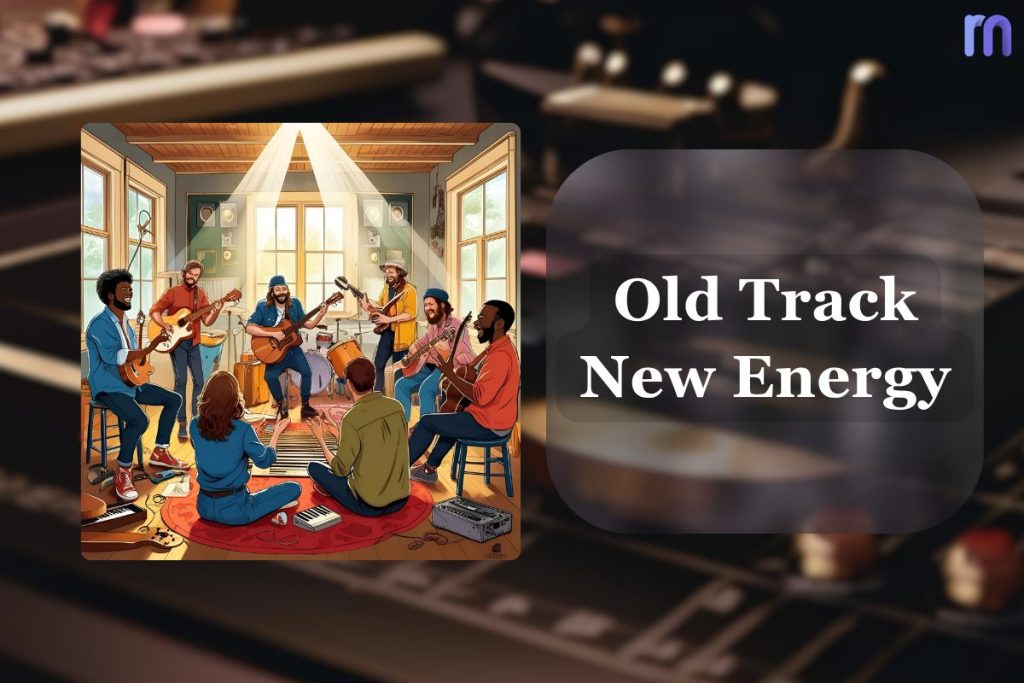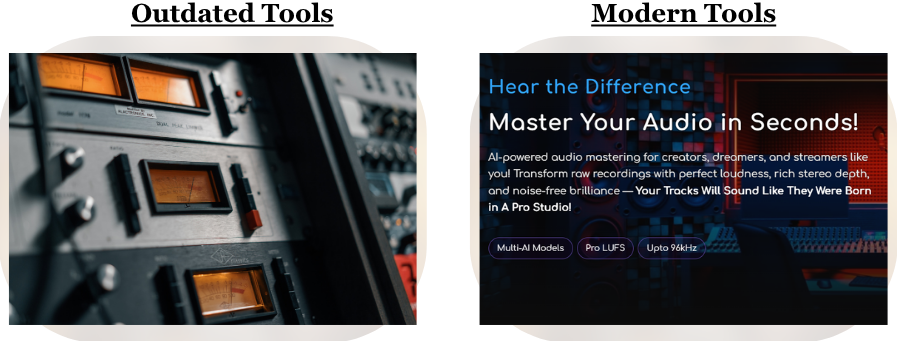Ever feel like your old track doesn’t hit the same anymore? Maybe it sounds too quiet, a bit muddy, or just… off. You’re not alone. As listener expectations and platforms evolve, many creators are looking for smart ways to remaster music and breathe new life into their older songs.
This blog breaks it down in simple terms and gives you a smart checklist. Whether you’re a bedroom producer or an indie artist building your catalog, you’ll know exactly when and why to remaster your music — and how to do it right.

Table of Contents
- What does remaster mean in music?
- The 5-point Remastering Checklist: When to Remaster music
- Want-to-remaster-music-without-the-hassle?
Part 1: What does remaster mean in music?
Definition
Remastering music means taking an already mixed song and giving it a sonic upgrade. You’re not changing the song itself — you’re just making it sound better with fresh ears and better tools.
Think of it like cleaning up an old photo. The moment is the same, but now it’s sharper, brighter, and clearer.
In remastering music, engineers use EQ, compression, stereo imaging, and loudness balancing to make a track sound more polished. It’s often done to improve older songs that sound dull, too quiet, or off-balance by today’s standards.
Whether you hire a pro or remaster audio online, the goal is simple: make your song sound clean, clear, and ready for modern platforms like Spotify, YouTube, and beyond.
Remastering VS Remixing
It’s easy to mix up remastering music with remixing, but they’re not the same thing.
Remastering music is about improving the overall sound of a finished song. You’re not changing the structure — just enhancing clarity, loudness, and balance using tools like EQ and compression. For example, if your old track sounds too quiet or muddy on Spotify, remastering helps it meet today’s audio standards.
Remixing, on the other hand, is a creative overhaul. You go back to the original stems — vocals, drums, instruments — and rebuild the track. You might swap out sounds, change the tempo, or even shift genres. Think of taking your indie song and turning it into a lo-fi or electronic version.
So if your goal is to polish what’s already there, remaster music. If you’re looking to reinvent the track completely, that’s when you remix.
Remastering VS Mastering
Mastering is what happens when you’re releasing a song for the first time. It comes after mixing, and it gives your track that final shine, adjusting loudness, EQ, and dynamics to make it sound good everywhere.
Remastering happens much later. It’s used to refresh older songs that already went through mastering but now sound outdated. Maybe the track is too quiet, lacks punch, or doesn’t hold up on streaming platforms. You’re working with the same stereo file, but using updated tools or techniques to make it sound better.
Think of mastering as setting the sound for a new release, and remastering as reviving that sound for today’s world. With options to remaster audio online or use AI music remaster tools, even indie artists can update their catalog for new audiences.
Part 2: The 5-point Remastering Checklist: When to Remaster music
1. Your Song Sounds Different on Every Device

Does your mix sound clean on studio monitors but muddy in earbuds or too bright in a car stereo?
That’s a sign of poor frequency balance or weak stereo imaging. Remastered music fixes this by making your track sound consistent everywhere. Be it laptops, Bluetooth speakers, headphones, or streaming platforms. If listeners hear something completely different depending on the device, a remaster can bring it all together. This is one of the easiest ways to tell if your track needs attention.
2. Your track is noticeably quieter than other songs

If listeners need to turn up the volume just for your track, then turn it back down for the next — that’s a problem.
Streaming platforms like Spotify and Apple Music use specific loudness targets (measured in LUFS). Older or unmastered songs often don’t meet these levels. Remastering music helps you raise loudness without distortion, making your track competitive while staying clean. Whether you hire a pro or remaster audio online, this step makes a huge difference. Quiet tracks don’t just sound date — they often get skipped. A solid remaster solves that instantly.
3. The song lacks clarity, punch, or depth

Does your track feel muddy, dull, or flat — like something’s missing? Maybe the kick doesn’t hit right, the vocals get buried, or the highs sound too harsh. These are all signs your original master lacks balance or dynamic control. A remaster in music tightens the low end, brightens the top, and brings out hidden details without changing the mix. This is especially useful if the original was done with limited tools or experience. Today, even AI music remaster tools can enhance punch and presence. If your song doesn’t cut through, it’s time for a proper remastering session.
4. The Original Master Was Done with Outdated Tools or Standards

If your track was mastered years ago — maybe for CD, MP3, or early uploads — it likely doesn’t hold up to today’s streaming standards.
Back then, loudness targets, resolution, and gear were very different. A modern remaster in music updates your track to meet platform-specific specs like true peak limits and LUFS levels. Even small improvements can boost clarity and compatibility. Whether you work with an engineer or remaster audio online, upgrading your older catalog ensures your songs don’t sound out of place next to newer releases on Spotify, Apple Music, or YouTube.
5. You’ve Grown — But Your Music Hasn’t
Your skills, taste, and tools have likely improved since you released that track. But your old master? It’s still stuck in time.
If your current songs sound clean and pro, but earlier ones feel rough or unpolished, that’s a clear sign. Instead of re-recording everything, you can remaster music to reflect who you are today. This way, your catalog stays consistent, and new fans don’t judge you by outdated sound. Even a quick AI music remaster can breathe new life into tracks that don’t match your current level. Growth deserves to be heard.
Want to remaster music without the hassle? Then Try This.
You don’t always need a big studio or an expensive engineer to get a great remaster. If you’re a creator looking for a faster, simpler way to upgrade your old tracks, tools like Remasterify can make it happen.
Remasterify is built to help musicians improve their sound quickly. Whether your mix feels too quiet, dull, or messy across devices, the platform makes it easy to fix those issues using smart AI-powered models. You upload your track, choose your preferences, and let the tool do the rest. It’s a great way to test how your music could sound with just a few clicks.
Even better — it’s not just a generic boost. Remasterify is designed with music creators in mind. The process still gives you control, but saves you hours of tweaking. So if you’ve ever wondered how your song might sound remastered — or you’re thinking about a re-release — this could be your easiest next step.
In short: if your music is ready for a glow-up, but you’re not ready to dive deep into plugins or expensive sessions, Remasterify is worth trying. Your songs might already be good — this just helps them sound their best.
Conclusion
Remastering isn’t just for major labels or classic albums. It’s a smart move for any artist who wants their older songs to sound fresh, clear, and competitive today. If your track sounds dull, quiet, or inconsistent across devices, it might be time to remaster.
Use the checklist above to decide — and if the signs are there, don’t overthink it.
Tools like Remasterify make the process easy, fast, and affordable. You don’t need new gear or hours of editing. Just upload, adjust, and upgrade your sound.
Ready to hear your music at its best? Try Remasterify.com today and give your songs the second life they deserve.
